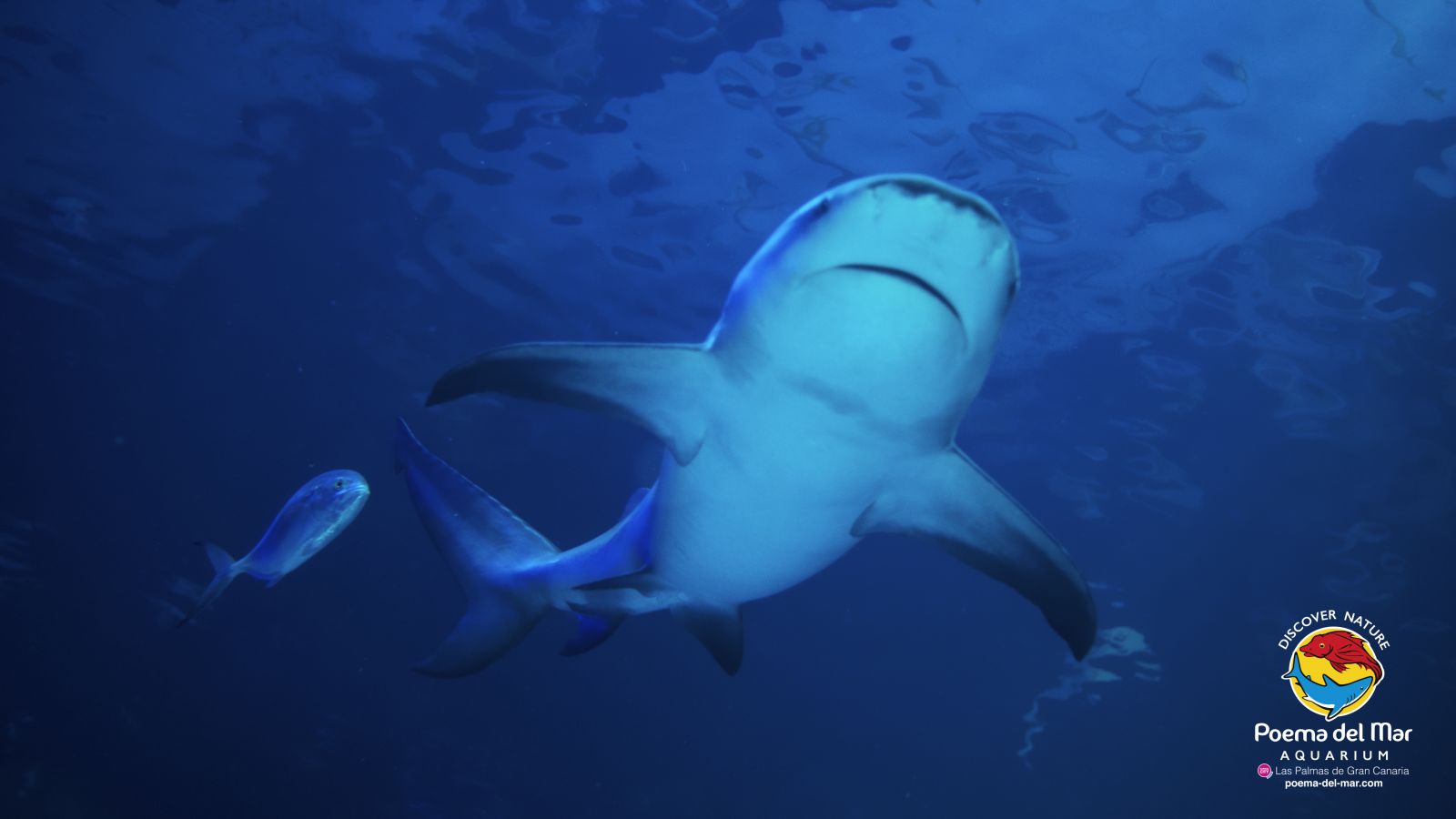Saltwater | Carnivorous | Nocturnal | Atlantic, Indian and Pacific Oceans | Up to 3,5 m | Up to 25 years
The bull shark (Carcharias taurus) is a shark species found in warm and temperate seas across the globe. It is easily recognised by its stocky body, pointed snout and prominent teeth. Although it is often considered an imposing predator, the bull shark generally leads a solitary life. Nevertheless, it may form temporary groups during migration or breeding seasons.
Geographical distribution
The bull shark inhabits the Atlantic, Indian and Pacific Oceans, and is commonly found along the coasts of the United States (Florida, Gulf of Mexico, Bahamas), Brazil, Argentina, the Canary Islands, Australia, Japan and several West African countries.
In particular, it shows a preference for coastal areas, sandy seabeds, coral reefs and rocky caves. Typically, it moves in waters between 190 and 200 metres deep; however, its main activity occurs at shallower depths, usually between 3 and 25 metres.
 Habitat
Habitat
This species is mainly found in:
- Warm and temperate coastal waters, particularly near sandy seabeds, coral reefs, caves and areas close to estuaries.
- Remarkably, it is the only shark capable of tolerating prolonged periods in both freshwater and saltwater, thanks to a physiological process that regulates its kidneys, liver and rectal gland.
- Strongly attached to specific areas, some populations show fidelity to particular breeding and feeding grounds.
- It can even regulate its buoyancy by swallowing air, which allows it to float calmly while resting.
Consequently, the presence of bull sharks is often considered a good indicator of the health of coastal habitats and marine biodiversity.
 Lifestyle and behaviour
Lifestyle and behaviour
The bull shark is generally a solitary and territorial species. Nevertheless, it occasionally gathers in groups for migration or reproduction.
- Active mainly at night, it tends to hunt and move during the hours of darkness, while resting during the day on sandy bottoms or near coral reefs.
- Its reproduction is ovoviviparous: the female incubates eggs inside her body for 10–11 months. Interestingly, this species is notorious for intrauterine cannibalism, meaning only the strongest embryos survive. As a result, it is common for only two pups to be born per litter, one from each uterus.
- In addition, some populations exhibit organised migratory patterns based on age and sex.
 Diet
Diet
Natural habitat
- Fish
- Rays
- Turtles
- Dolphins
- Seabirds
- Cephalopods and crustaceans
- Above all, the bull shark is an opportunistic predator, adapting its diet to whatever prey is available in its environment.
Under human care
- Prepared animal-based foods
- Cuts of fish and assorted seafood, carefully adjusted to meet their nutritional needs
 Conservation status
Conservation status

The bull shark is listed as Vulnerable on the IUCN Red List, mainly due to overfishing, the trade of its meat and fins, and the degradation of marine habitats. Although it adapts relatively well to life in captivity (for instance, at Poema del Mar aquarium), wild populations are steadily declining in many regions.
The main threats include:
- Overfishing and bycatch
- Loss and fragmentation of coastal habitats
- Pollution and the degradation of reefs and estuaries
Therefore, protection and continued research are essential to preserve both the balance of coastal ecosystems and the overall diversity of marine life.
